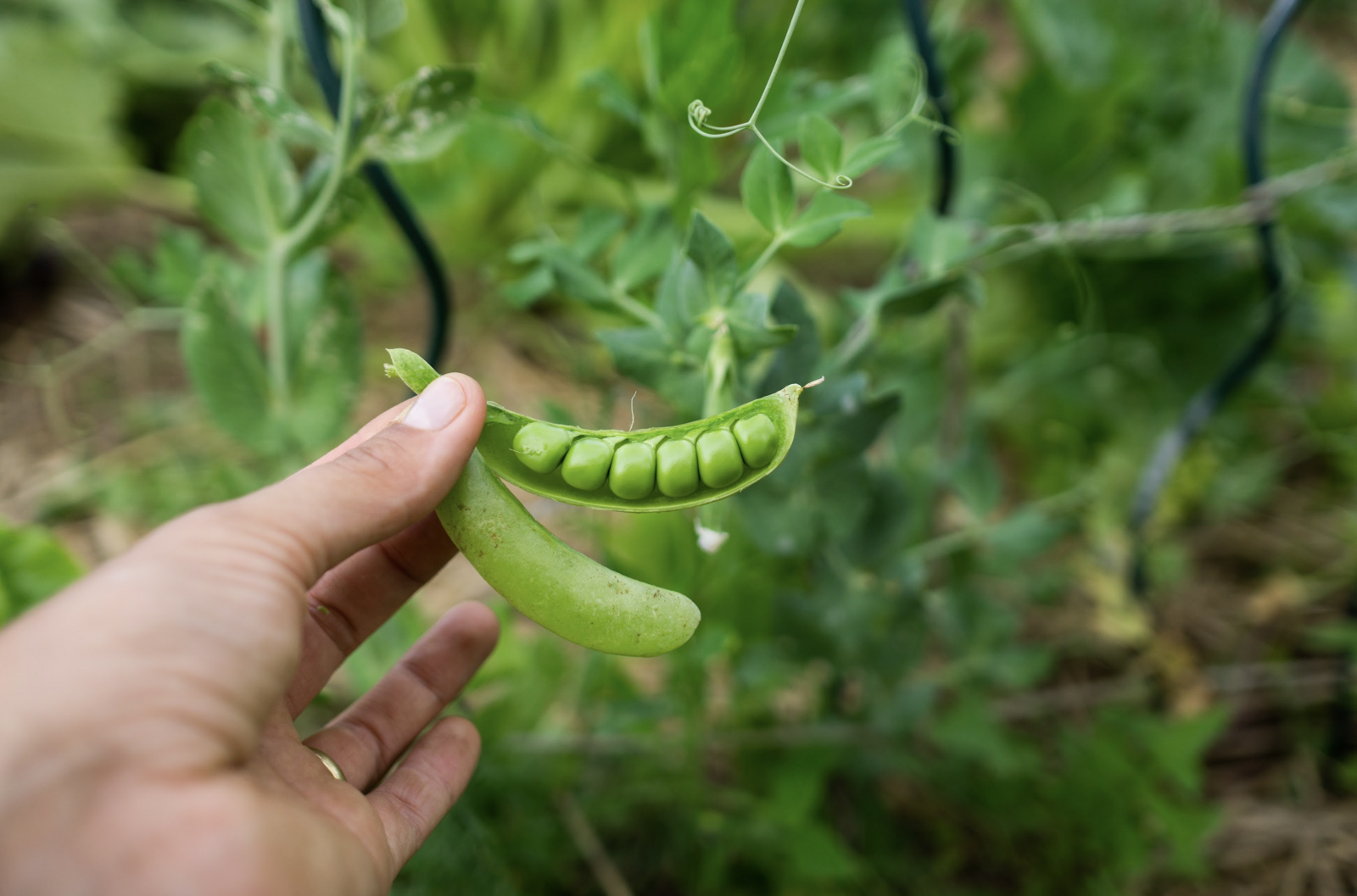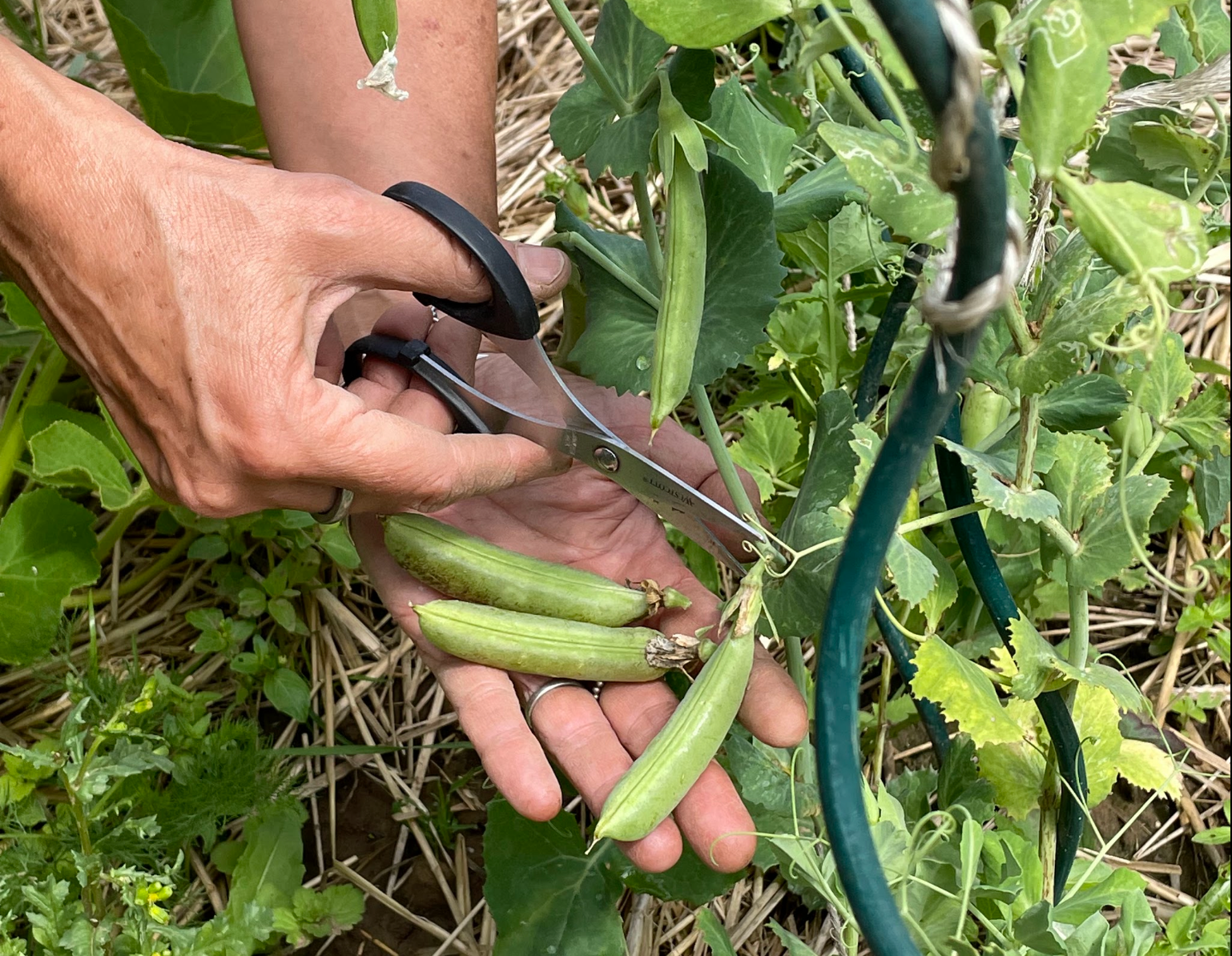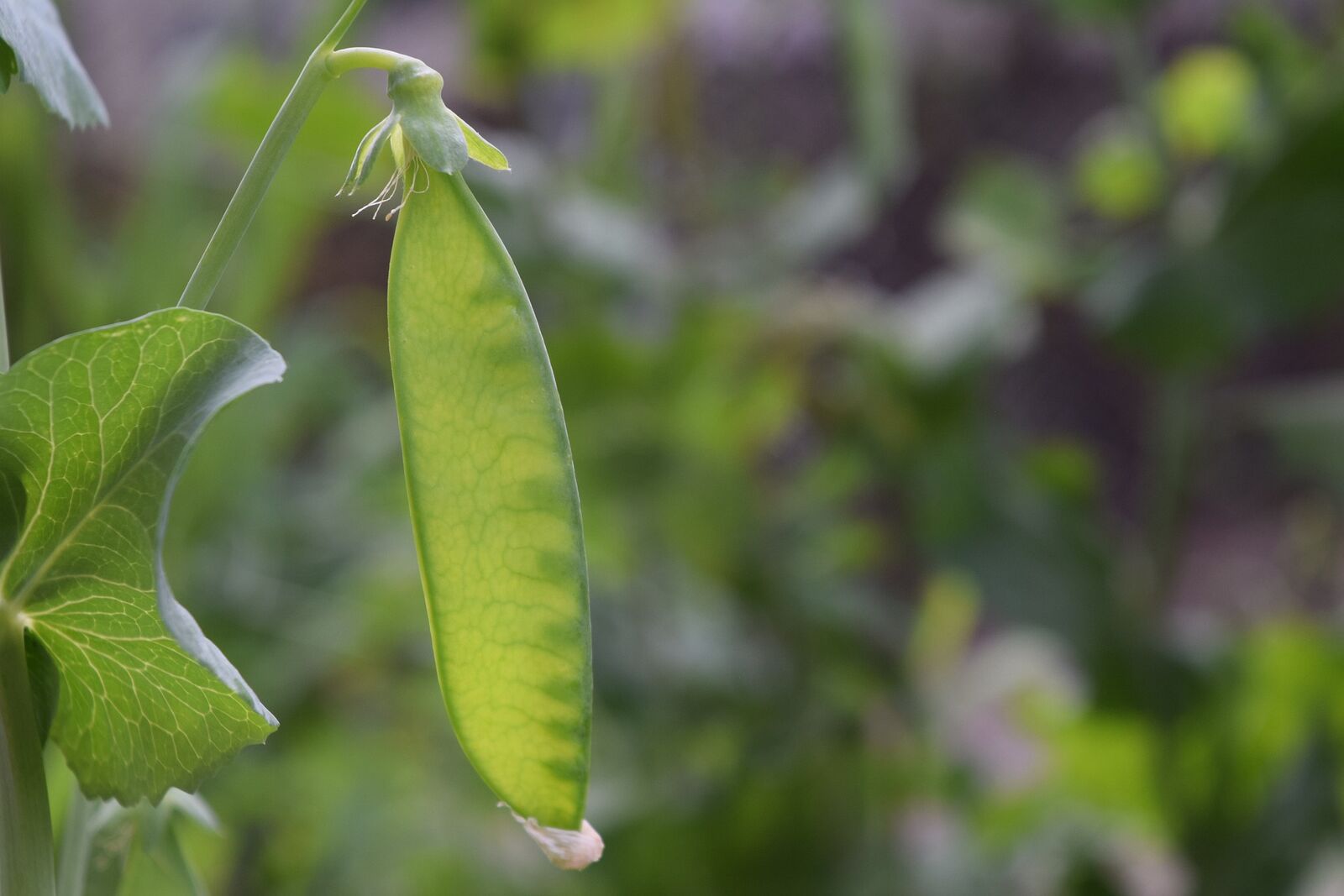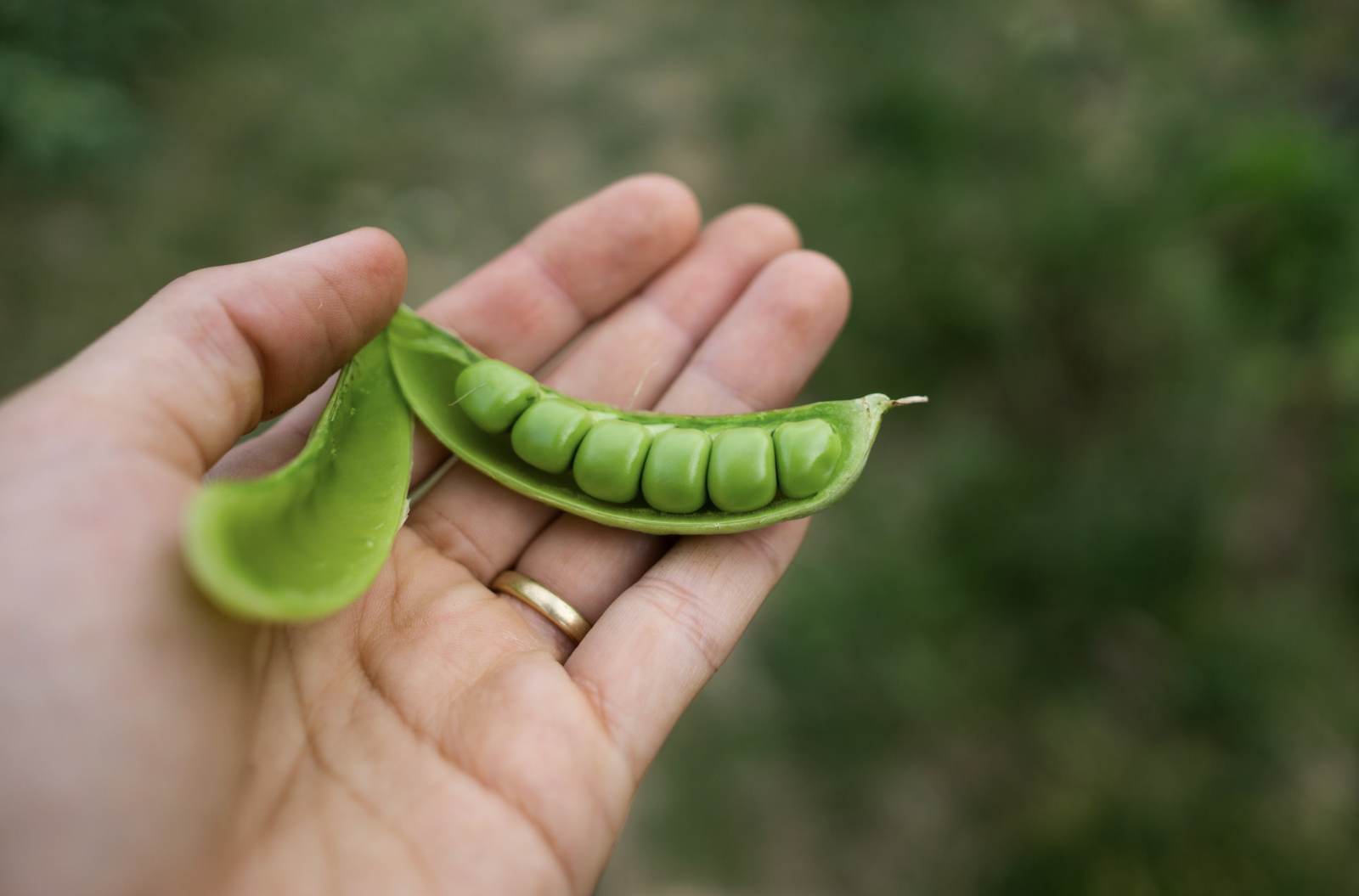
Harvesting & Preserving Peas
Peas are an important source of protein in the home kitchen. But that's not all - legumes are also known for being a great green manure plant. It is therefore worth growing them in your own garden!
Have you planted your peas and are they already forming their first pods? Here you can find out what you need to consider when harvesting snap peas, paler peas and sweet peas. We also explain how you can preserve peas.
This Article Contains:
Quick Overview
Harvesting Peas
- When? Depending on the variety and sowing time, between June and August; winter peas are harvested as early as May, as they remain in the bed throughout the winter
- How often? Marrowfat peas and sugar snap peas are harvested 1-2 times a week, paler peas are harvested once
- Harvest sugar snappeas - flat pod without mature seeds
- Harvesting palerpeas - with a dried pod and fully ripe seeds
- Harvesting snap pe as - green pod and well-formed green seeds
When to Harvest Peas?
Depending on the sowing time and variety, the harvest usually begins in June and lasts until August. Most pea varieties are sown between March and June. However, there are also some varieties that you can sow and therefore harvest later. There are even some winter peas that give you a very early harvest in May. In general, however, pea plants are on the bed for between three and four months. Some varieties grow up to 1.30 m/1.4 yd high, some old varieties even up to 2 m/2.2 m.

A little tip: The young sprouts of peas are also edible and can be used in salads and vegetable dishes. You can also grow peas as sprouts.
Do Peas Regrow After Picking?
Marrowfat peas and sugar snap peas are harvested continuously as soon as the fruits are ripe. It is best to harvest them once or twice a week so that they are still very tender and sweet. Always pinch off the pods that are already large enough and let the rest continue to grow. Frequent harvesting accelerates the regrowth of the new pods. Shelling peas, on the other hand, are only harvested when the pods are dry. For this reason, snap peas are harvested in one go.

Need a Second Opinion?
If you're unsure whether your peas are ready to harvest, you can ask for advice in our Fryd community. Here you can exchange ideas with numerous gardeners and benefit from the experience of others.
To the CommunityWhen Are Peas Ripe?
Harvesting Sugar Snap Peas
With sugar snap peas , the seeds in the pod are not allowed to ripen, but are harvested while they are still flat. As soon as thicker fruits form inside, the shell becomes firm and fibrous.

Harvesting Shelling Peas/Palmer Peas
Shell peas or paler peas are usually harvested dried . Only harvest them as soon as the pods are brown and dry. For a particularly easy harvest, leave the pods to dry indoors and then thresh them out. The pods burst open and you save yourself the tedious task of shelling the peas.
Harvesting Field Peas
Marrowfat peas are harvested when the grains are round and bright green. If you wait too long to harvest them, the sugar turns into starch and the peas lose their flavor. To prevent them from over-ripening and losing their flavor, you should pick and process marrowfat peas immediately after harvesting. To do this, break the pods open at the seam and split the peas, which can then also be eaten raw or cooked.

Preserving Peas: Freezing & Drying Peas
Marrowfat and sugar snap peas will only keep for a few days in the fridge. To preserve them, you can simply blanch the peas briefly, rinse them in cold water and then freeze them. Alternatively, you can also freeze sugar snap peas fresh. Paler peas keep longer than other types of peas because they are easier to dry. The dry grain is also still smooth and round. Simply leave the dried paler peas to soak overnight before preparing them and they are ready. For year-round use in the kitchen, different peas can be combined in the garden to maximize the harvest window.
Obtaining Your Own Seeds
As the pea is an annual plant, it must be sown anew each year. The seeds can be easily extracted from the pods. Simply allow a few pods of seed-resistant varieties to ripen until they are brown and dry. It is not important to harvest the pods particularly early. The seeds inside should be fully ripe, regardless of whether they become mealy and no longer taste as delicious. Then dry the ripened seeds gently (not in the sun or in the oven) and sow them the following year as described above. The seeds will wrinkle a little during drying, which is completely normal. Be aware that the germination capacity of your own and purchased seeds decreases significantly after 4 to 5 years.
You can find out how to grow your own young plants from these seeds in this article. Here you can find Tips on Sowing Peas and Growing them.
Want to get helpful gardening tips all year round and plan your own beds in the best possible way? Then register here or download the Fryd app for Android or iOS.
Fryd - Your digital bed planner
(Cover image by Daiga Ellaby on Unsplash)

Marie
Marie is an agronomist. She is particularly interested in the sustainable and organic cultivation of vegetables and other plants. In her own garden, she gained experience and likes to try things out to learn from nature. She is particularly interested in the values and principles of permaculture, in order to contribute not only to the well-being of nature, but also to the well-being of people and future generations.
Learn MoreCurrent Topics in the Community

We had an olive tree ... when it didn't survive a harsh winter, my husband and our children turned it into this sculpture - a real #heart element in our garden. We planted a rambler rose on the second olive tree, which enchants us every year with its white flowers. It looks as if it were a flowering rose bush ....

Liked 5 times
May I introduce: my roommates Max (left) and Moritz. Max is a "sweet starter", which I used for the panettone and I can say it's much better than the store-bought one! The baguette (ok I still have to work on the perfect shape 🤣) with yeast only. The Moritz is a rye sourdough and is used for Vintschgauer.

Hello lovelies I am new to gardening What recommendations do you have for buying seeds? Or which stores can you recommend? I'm planning to start with the classics Onions, potatoes, garlic, carrots, herbs, lettuce, tomatoes, peas, beet and pumpkin
Show 3 answersPopular Articles

Overwintering Parsley: How to Do It Successfully

How to Grow Lettuce in Winter: Varieties, Sowing, Harvesting

Growing Sage Plant: Tips for Sowing and Harvesting

What Herbs Can Be Planted Together?

Create & Design a Permaculture Garden

Overwintering Plants: Tubs, Pots and Raised Beds

Pruning, Fertilizing & Propagating Currants: Care Tips

Pruning Raspberries: How to Do It

Vegetable Garden With Greenhouse: How to Use Greenhouse Effect

Winterizing Beds and the Garden: How to Do It
FAQ
When are peas ready to harvest?
Peas are ripe when the pods are full but still tender and sweet-tasting.
How do I harvest peas correctly?
Peas should be harvested in the morning by carefully picking the pods from the plant.
What is the best way to store peas?
Fresh peas should be eaten within 2-3 days or frozen immediately.